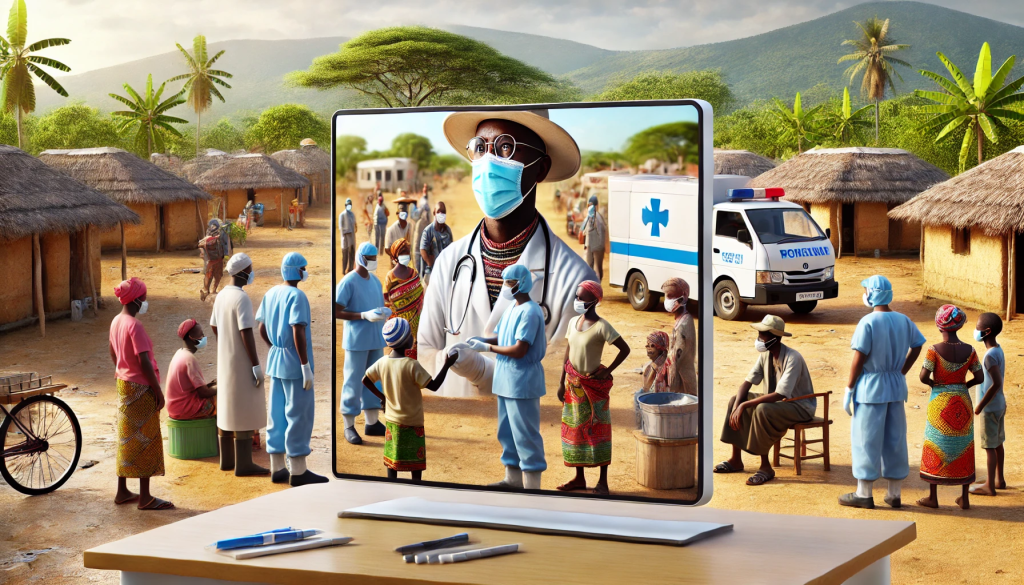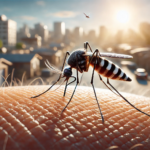In the world of infectious diseases, few names inspire as much fear as the Marburg virus. Often overshadowed by its viral cousin, Ebola, this highly contagious and deadly pathogen has been linked to some of the most devastating outbreaks in recent history. A recent discovery of a Marburg virus sample from a remote region in Tanzania has reignited global concern, raising questions about its risks and the measures needed to prevent its spread. In this article, we’ll explore what the Marburg virus is, its symptoms, transmission pathways, and why this Tanzanian sample is causing alarm among scientists and public health officials.
What Is the Marburg Virus?
The Marburg virus is a member of the filovirus family, which also includes Ebola. First identified in 1967 during simultaneous outbreaks in Marburg and Frankfurt, Germany, the virus is believed to originate from fruit bats (Rousettus aegyptiacus), which serve as its natural reservoir. While rare, Marburg virus outbreaks are notoriously deadly, with case fatality rates ranging from 24% to 88%, depending on the outbreak and healthcare infrastructure.
Why Is the Marburg Virus So Dangerous?
- Rapid Transmission: The virus spreads quickly through contact with bodily fluids, contaminated surfaces, or infected animals.
- High Mortality Rates: Without immediate medical intervention, the chances of survival are slim.
- Lack of a Cure: To date, there is no approved antiviral treatment or vaccine for Marburg virus disease (MVD), making prevention and containment essential.
Symptoms of Marburg Virus Disease (MVD)
Recognizing the symptoms of Marburg virus disease early can be life-saving, as rapid medical care significantly improves outcomes. Symptoms typically appear 2 to 21 days after exposure and progress rapidly.
Early Symptoms (Days 1–5):
- Sudden onset of high fever.
- Severe headache and muscle pain.
- Intense fatigue and weakness.
Advanced Symptoms (Days 5–10):
- Nausea, vomiting, and diarrhea, often described as “bloody.”
- Severe abdominal pain.
- Hemorrhaging, including nosebleeds, gum bleeding, and internal bleeding.
- Shock and multi-organ failure, which can lead to death if untreated.
How Does the Marburg Virus Spread?
The transmission pathways of the Marburg virus are well-documented, highlighting the ease with which it can spread in vulnerable communities.
Primary Transmission
- Animal to Human: Initial infections occur through contact with infected animals, such as bats or primates.
Secondary Transmission
- Human to Human: The virus spreads through direct contact with bodily fluids (e.g., blood, saliva, sweat, urine) of an infected person.
- Fomites: Contaminated surfaces or materials like bedding and clothing can also harbor the virus.
Given its high infectivity, even healthcare workers are at significant risk if proper precautions are not taken.
The Tanzanian Sample: A Global Wake-Up Call

In early 2025, researchers identified a Marburg virus sample from a remote region in Tanzania. This discovery has sparked global concern for several reasons:
- Geographic Expansion: Tanzania has not previously been a hotspot for Marburg outbreaks, raising questions about its spread to new regions.
- Zoonotic Spillover: The sample was linked to a previously unidentified bat colony, suggesting new transmission pathways.
- Limited Healthcare Access: Remote regions often lack the medical infrastructure to contain outbreaks effectively, increasing the risk of spread.
Why This Matters
The Tanzanian sample underscores the importance of early detection and global collaboration. Experts warn that without proactive measures, the virus could exploit weak healthcare systems, leading to widespread outbreaks.
Global Efforts to Combat Marburg Virus
While no vaccine or specific treatment for the Marburg virus currently exists, significant progress has been made in research and outbreak response.
1. Experimental Vaccines and Treatments
- Vaccine Trials: Several vaccine candidates, including those based on the rVSV platform used for the Ebola vaccine, are undergoing clinical trials.
- Antiviral Therapies: Experimental drugs like Remdesivir and monoclonal antibodies show promise but require further testing.
2. Strengthening Surveillance
- Global Health Networks: Organizations like the World Health Organization (WHO) and the Centers for Disease Control and Prevention (CDC) have intensified efforts to monitor and contain Marburg virus outbreaks.
- Local Capacity Building: Training healthcare workers and providing protective equipment are crucial for preventing hospital-based transmission.
Global Statistics on Marburg Virus
| Indicator | Value | Source |
|---|---|---|
| First documented outbreak | 1967 (Marburg and Frankfurt, Germany) | World Health Organization (WHO) |
| Total number of outbreaks worldwide | Over 15 major outbreaks | Centers for Disease Control and Prevention (CDC) |
| Average case fatality rate (CFR) | 50% (ranges from 24% to 88%) | World Health Organization (WHO) |
| Largest outbreak recorded | 2005 Angola outbreak: 374 cases, 329 deaths (88% CFR) | World Health Organization (WHO) |
| Number of affected countries | At least 11 countries in Africa and Europe | Centers for Disease Control and Prevention (CDC) |
| Known reservoirs of the virus | Rousettus aegyptiacus bats (fruit bats) | Journal of Virology |
| Estimated annual economic impact of outbreaks | Over $1 billion in affected regions due to healthcare costs and lost productivity | Global Health Security Index |
| Confirmed cases in recent Tanzanian outbreak (2025) | 5 cases, 3 deaths (60% CFR) | Tanzanian Ministry of Health |
| Current vaccine candidates in clinical trials | At least 3 major vaccine candidates | The Lancet Infectious Diseases |
| Countries with laboratory facilities for testing | Fewer than 25 globally | World Bank and Global Preparedness Monitoring Board |
Regional Breakdown of Marburg Virus Cases
| Region | Key Outbreaks | Notable Statistics |
|---|---|---|
| Sub-Saharan Africa | Angola (2005), Uganda (2017), Ghana (2022) | Accounts for over 95% of documented cases. |
| Europe | Germany (1967), Serbia (1967) | Linked to imported infected monkeys in research labs. |
| Asia | None reported to date | High-risk regions include areas with bat populations. |
| Americas | None reported to date | Cases possible due to global travel and trade. |
Impact on Healthcare and Response
| Category | Impact | Example/Insight |
|---|---|---|
| Healthcare Worker Risk | Up to 25% of cases occur in healthcare settings. | Lack of PPE contributed to rapid spread in Angola (2005). |
| Economic Cost | Estimated losses of $1 billion per outbreak. | Includes healthcare costs, containment, and lost productivity. |
| Global Health Security Readiness | Only 50% of countries meet WHO preparedness standards. | Weak healthcare systems exacerbate spread. |
| Public Awareness | Limited in high-risk regions. | Rural populations often unaware of symptoms. |
Famous Cases and Celebrities Who’ve Raised Awareness
While Cushing’s syndrome or similar conditions have been linked to several public figures, Marburg virus has remained relatively underreported. However, stories from survivors and global health advocates are helping to shine a light on the devastating impact of this disease.
Survivors’ Stories
One well-documented case involved an international aid worker who contracted the virus while assisting in a Marburg outbreak in Uganda. Despite facing immense challenges, including prolonged isolation and experimental treatments, they survived and now advocate for global health funding.
How to Protect Yourself from the Marburg Virus
Prevention is the best defense against the Marburg virus. Here’s how you can reduce your risk:
- Avoid Contact with Bats and Primates: Refrain from visiting caves or handling animals in outbreak-prone areas.
- Practice Hygiene: Wash hands frequently and avoid touching your face.
- Use Protective Gear: Healthcare workers should wear gloves, gowns, and masks when caring for patients.
- Follow Travel Advisories: Stay informed about outbreaks and avoid affected regions if possible.
The Future of Marburg Virus Research

The Tanzanian sample has catalyzed a renewed focus on Marburg virus research. Scientists are working tirelessly to develop vaccines, improve diagnostic tools, and strengthen global surveillance systems.
Key Research Priorities
- Genomic Studies: Understanding the virus’s mutations and transmission patterns.
- Vaccine Development: Accelerating trials to bring effective vaccines to market.
- Global Collaboration: Sharing resources and knowledge across borders to combat the virus collectively.
Conclusion: A Call to Action
The Marburg virus is a potent reminder of our interconnected world and the shared responsibility to prevent pandemics. From its deadly symptoms to the alarming discovery in Tanzania, this disease demands vigilance, research, and global cooperation. While the risks are real, advancements in science and technology offer hope for a future where outbreaks are swiftly contained.
Let Amy Schumer’s story serve as a reminder that knowledge, awareness, and action are our best tools in the fight against rare and deadly diseases.

















Nice blog here! Also your website loads up fast! What web host
are you using? Can I get your affiliate link to your host?
I wish my website loaded up as quickly as yours lol
My brother suggested I might like this website. He was totally right.
This post actually made my day. You can not imagine just how much
time I had spent for this information! Thanks!
What i do not understood is in truth how you’re now
not really much more neatly-liked than you may be right now.
You’re very intelligent. You recognize therefore significantly with
regards to this subject, produced me individually
consider it from so many varied angles. Its like men and women are not fascinated unless it’s one thing to do with Lady gaga!
Your individual stuffs outstanding. At all times maintain it up!